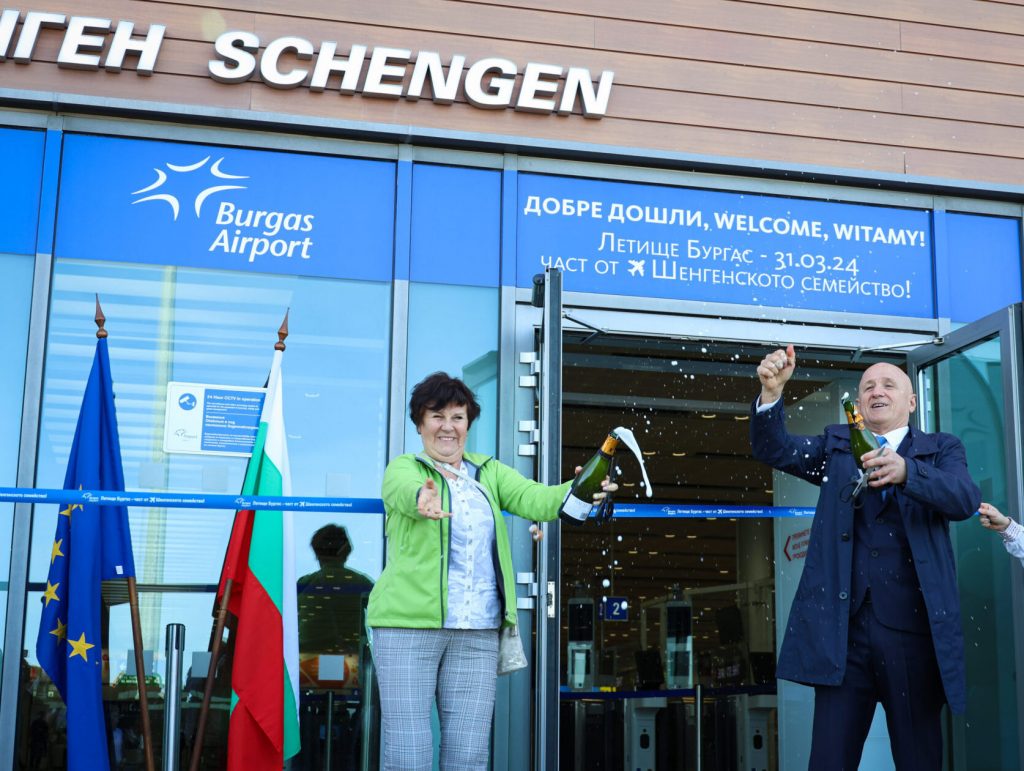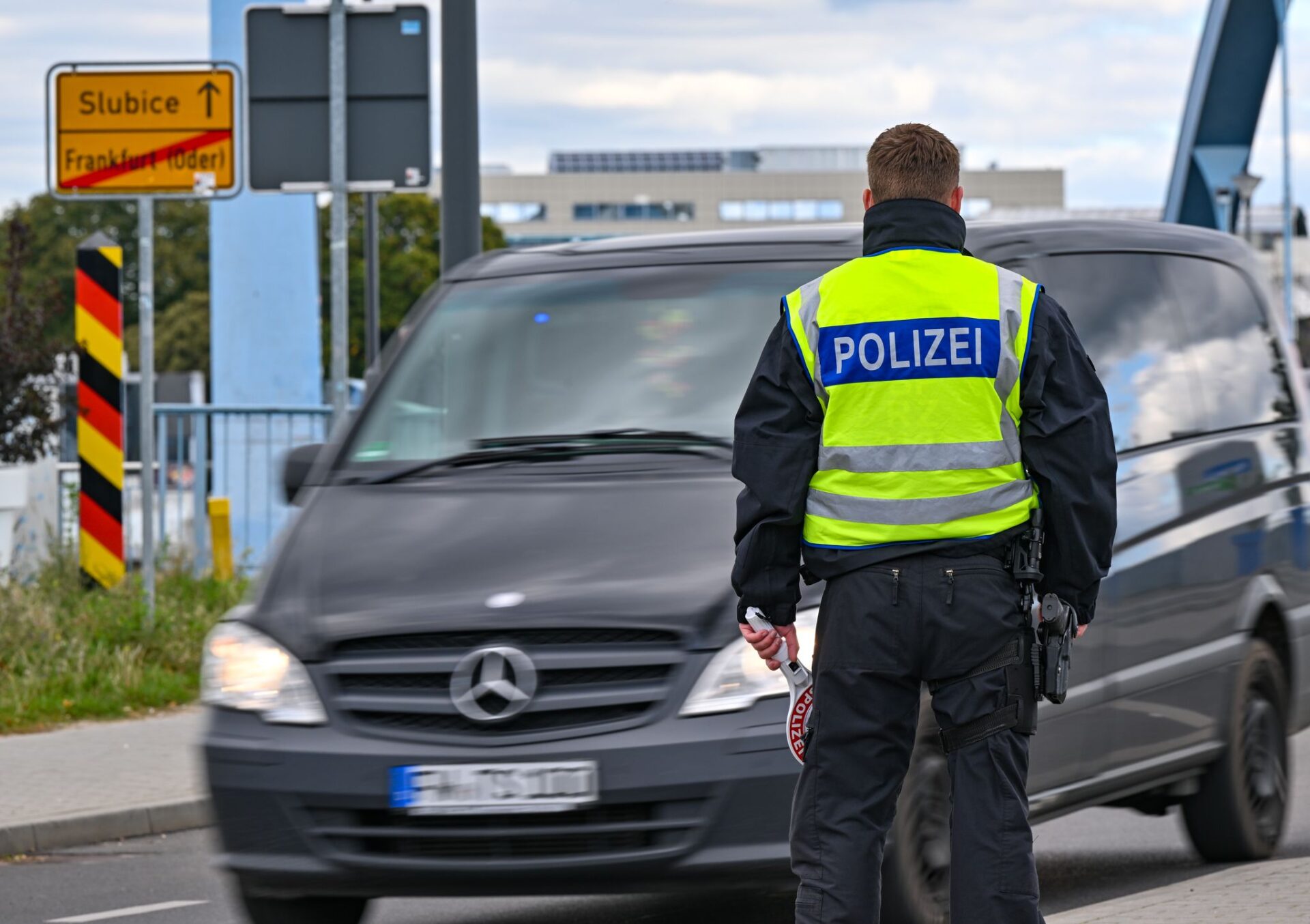 Have the article read by OpenAI (Beta). Please note that AI translations may take some time to process.
Have the article read by OpenAI (Beta). Please note that AI translations may take some time to process.In mid-September, Germany expanded border controls to the frontiers with all its nine neighbours in hopes of curbing the flow of irregular migrants, addressing threats from Islamist terrorist groups and cross-border criminal organisations. The move has sparked protests from other EU members.
Germany lies at the heart of Europe and of the visa-free Schengen zone, which is designed to allow the free movement of people and goods, long a core idea of the European project.
After deadly knife attacks in the German cities of Mannheim and Solingen causing outrage and horror, long-standing debates over how to handle migrants seeking asylum in Germany have intensified in recent weeks.
The suspected attacker in Solingen, a Syrian citizen, had evaded an order to be deported from Germany to Bulgaria, where he first entered the EU.
Poland, Austria and Greece have been among countries to complain about the introduction of border checks, which are set to last an initial six months.
Polish Prime Minister Donald Tusk condemned the move as “unacceptable” and his Greek counterpart Kyriakos Mitsotakis said in an interview with Talk Radio that an “unilateral abolition of Schengen” was not the answer.
The Czech Interior Minister Vit Rakušan said that he does not expect any change at the Czech-German border.
Border controls with Poland, the Czech Republic, Austria and Switzerland were already in place before and have been expanded to the borders with France, Luxembourg, the Netherlands, Belgium and Denmark.
With national elections looming in Germany next year, the attacks in the country put intense political pressure on Chancellor Olaf Scholz’s government to toughen its stance on migrants and asylum seekers.
But this is not exclusive to Germany: The success of far-right parties in elections in key European countries is prompting even centrist and left-wing governments to tighten policies on migration, creating cracks in European unity and sparking concern among activists.
Experts: Border checks won’t curb illegal migration
The UN High Commissioner for Refugees Filippo Grandi told the German daily Stuttgarter Zeitung there were “alternatives to restrictive measures” such as turning migrants back at the border. “A fixation on border controls will not deter the truly desperate,” Grandi said.
“The reintroduction of temporary internal border controls in the Schengen area is almost the automatic consequence of the lack of a common understanding of who is allowed to enter and for what purpose”, Jean-Louis De Brouwer, director for European affairs at the Egmont Royal Institute for International Relations in Brussels, told Romanian news agency AGERPRES.
In his opinion, the reintroduction of internal border controls in Schengen would, in one way or another, “be detrimental to the internal market”. He believes that very soon – it could be at the next European Council – the member states will have to answer a very difficult question: whether they want to keep Schengen or not.
Migration researcher Gerald Knaus does not expect the extension of border controls to all German land borders to lead to a noticeable decrease in the number of asylum seekers. “Anyone who expects border controls to lead to a reduction in irregular migration is creating an expectation that is unrealisable,” he said on Deutschlandfunk radio.
Border controls were also not a means of preventing Islamist terrorism, for example, as many of the perpetrators became radicalised in Germany, the researcher further said.
What is Schengen and who’s part of it?
The border-free Schengen area allows free movement for more than 425 million EU citizens and non-EU citizens who legally live, work, travel or study in the European Union.
Named after a small village in Luxembourg, the Schengen zone started as an intergovernmental project with five countries in 1985: Luxembourg, Germany, France, Belgium and Netherlands.
In waves, the Schengen zone grew and now incorporates most EU countries – except Cyprus and Ireland – as well as non-EU states Iceland, Norway, Switzerland and Lichtenstein. Today, it is the biggest zone of free movement in the world.
According to the Council of the European Union, 3.5 million people cross internal borders every day.
Even though Germany’s decision has sparked controversy, it’s not the only Schengen member having border checks in place. Austria, Denmark, France, Italy, Norway, Slovenia, Sweden also have temporary measures in place.
The Court of Justice of the European Union (CJEU) ruled in 2022 that a Member State can only extend temporary border controls if it is faced with a new threat affecting its public policy or its internal security that is different from the threat initially identified.

Phohto: Христо Стефанов/BТА
Bulgaria and Romania: Half in, half out?
As of March 31, 2024, Bulgaria and Romania have partially joined the Schengen area. Controls for internal sea and air travel have been lifted while controls at land borders remain. EU officials expect a decision on full Schengen membership until the end of the year.
In December last year, Austria was the only EU country that did not support a complete abolition of border checks at the Bulgarian and Romanian Schengen borders.
Countries such as Spain and Slovakia are in favour of Bulgaria and Romania becoming full members of the Schengen zone.
“I am very pleased that in 2024 internal air and sea controls between Bulgaria and Romania and the other Schengen countries will become a thing of the past, after twelve years of negotiations,” said Spanish Interior Minister Fernando Grande-Marlaska last year during Spain’s presidency of the Council of the European Union.
Visiting Austria, Slovak President Peter Pellegrini stated that the Schengen accession of the two countries is “important” for investments and also for the effective protection of the EU’s external borders.
The Head of the European Commission Representation to Bulgaria, Yordanka Chobanova said, on Tuesday in Sofia a decision about Bulgaria’s and Romania’s entry into the Schengen area by land is expected by the end of this year.
In July, a report by the Institute of Economic Research with the Bulgarian Academy of Sciences showed that the direct losses for Bulgaria from the delay of full accession to Schengen amounted to over 400 million Euro.
Schengen and Migration: Austria’s veto and its new migration portfolio
Austria will no longer be able to use the migration problem as a pretext to block Bulgaria and Romania from Schengen, Romanian MEP Siegfried Mureşan, who is a Vice-President of the European People’s Party (EPP), said in a BTA interview in Strasbourg last week.
“Austria has been given the portfolio of Commissioner for Migration and Home Affairs, so it has the tool it needs to solve migration problems. The solution to this problem will depend on their own commissioner,” Mureşan said.
Austria’s EU commissioner-designate is Finance Minister Magnus Brunner who is a member of the Austrian People’s Party (ÖVP). The ÖVP belongs to the EPP, a centre-right group in the European Parliament.
European Commission President Ursula von der Leyen’s decision to give the migration portfolio to Brunner has stirred some controversy in Brussels as he has little experience on the subject.
Taking Austria’s opposition of the Romanian and Bulgarian Schengen accession and the fact that the migration and internal affairs portfolio has been assigned to an Austrian into account, a Commission spokesperson said that Commissioners do not represent their Member State of origin, but work to contribute to the EU project, in the interest of all European citizens.
The President of the European Movement Austria (EBÖ), Christoph Leitl, said: “This is an opportunity for Austria, namely to turn criticism into participation!”
The new European Commissioners are yet to pass their “grilling” by the European Parliament before the new Commission can be finally confirmed. Historically, not all candidates pass which means their countries need to nominate a new person.
This article is published twice a week. The content is based on news by agencies participating in the enr.
